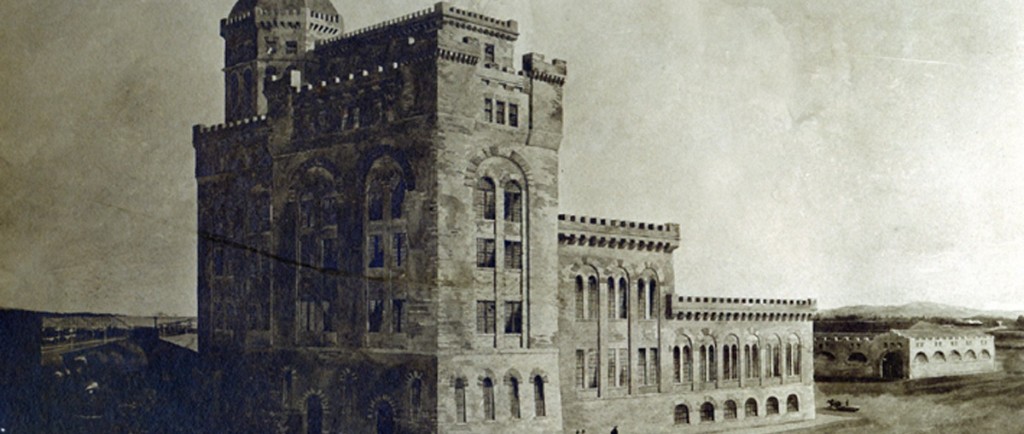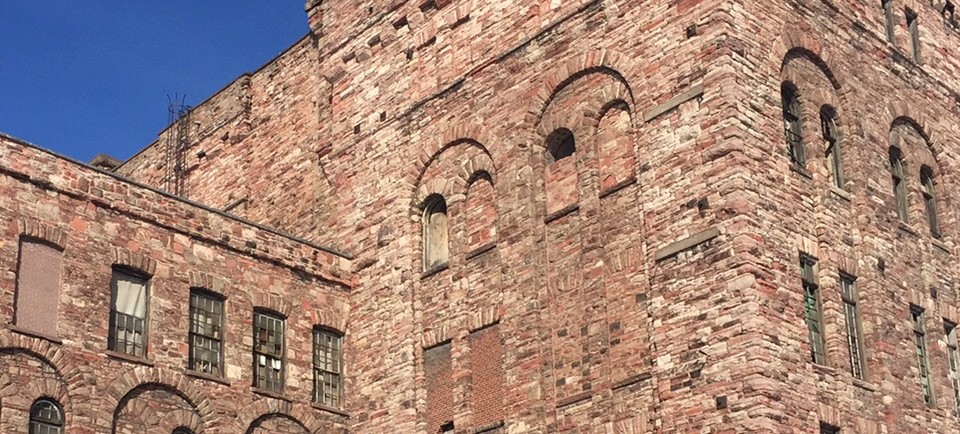The Paper Mill Structures: Symbols of Vision and Innovation
The Exhibit focuses on the construction, use, and significance of a collection of heritage structures previously part of St. Mary’s Paper. It captures the Francis H. Clergue story, the St. Mary’s founder who transformed late 19th century Sault Ste. Marie through his vision and industrial innovation. The Exhibit also explains the remarkable modern repurposing of these structures.In 2012, the Sault community watched as salvage workers and machines dismantled the St. Mary’s Paper site. Over a century of paper production had ended. This once-vital regional industry was gone, and hundreds of permanent St. Mary’s jobs lost. Many residents were worried for the city’s future. Yet, as the old, battered factory complex shrunk piece by piece, something spectacular appeared in its midst. The demolition company saw an opportunity to preserve the five remaining original St. Mary’s buildings as part of its visionary redevelopment plan.
The Administrative Building, Machine Shop, Pulp Tower, Board Mill and Yard Locker soon stood alone, with the salvage site now resembling a grand ruined castle and not a failed factory yard. Constructed from iconic local reddish-pink sandstone between 1896 and 1901, these remarkable buildings were designed in the ‘Romanesque Revival’ style popularized by famed American architect H.H. Richardson. Turrets, towers, crenellations, soaring ceilings and great arches are the impressive common design features. These architectural treasures are the heart of Mill Square, a revitalized and repurposed modern Sault city district. Music, art, education, business innovation, a First Nation’s cultural centre, science, tourism and sustainable local food markets are the essential Mill Square elements driving this economic and urban transformation.
Daring American-born investor Francis H. Clergue (1856-1939) was responsible for creating Consolidated Lake Superior, the Sault industrial complex that included St. Mary’s Paper and its heritage buildings. Clergue dreamed of developing the vast hydro-electric potential of the Sault rapids, and founding a manufacturing empire based on cheap power and the untapped resources of Northern Ontario. It was a dream shared by major Philadelphia and New York investors, as well as one championed by the provincial and federal Canadian governments of the day. Money poured into Clergue’s Consolidated Lake Superior. Within six years he assembled a dizzying array of thriving enterprises. Hydroelectric plants, the paper mill, a research laboratory, nickel, gold and iron mines, railroads, and steamship lines sprang up almost as quickly as Clergue could envisage them. The Clergue crown jewel was the Sault steel plant (now Essar Steel Algoma), the first-ever Canadian steel rail production facility.
Clergue’s meteoric commercial rise brought him international acclaim. Major newspapers across the continent heralded Clergue as the “Sault King” and “Colossus of the North,” the new industrial baron appeared poised to become one of the richest men in the world. Remote Sault Ste. Marie was predicted by many observers to become a new-age Philadelphia or Chicago.
Start reading the storyDestination North, Organizing institution
Tagona Creative, Text
Elena Veldman, Compilation
Paper Mill Retirees, Community Memory Participants



